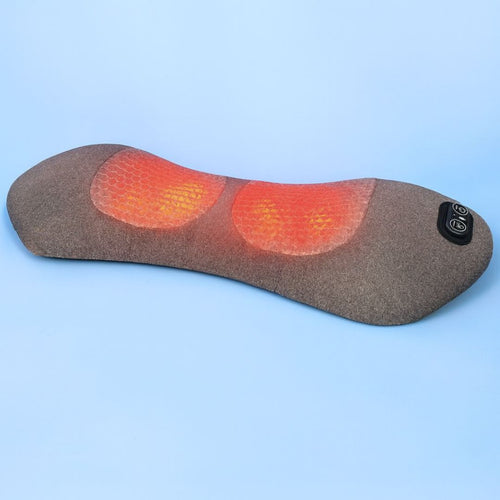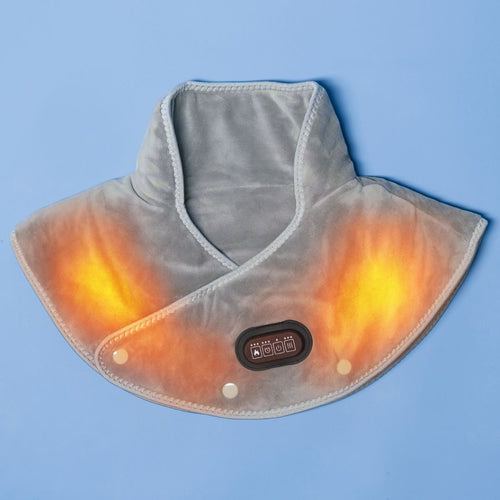Can Neck Pain Cause Migraines You Can't Seem to Shake?
By Holly Grace Callis | Published on August 11th, 2025
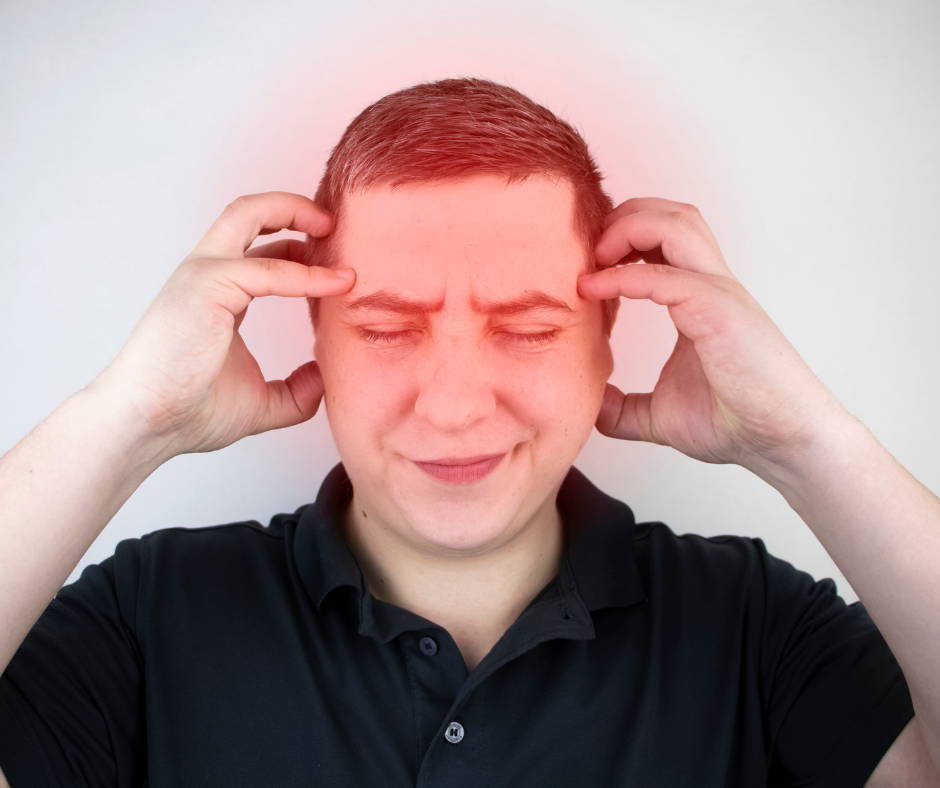
You grip your temples, massaging tense muscles at the base of your skull, and there's your neck, dragging you into another migraine episode. It's more than a coincidence: numerous studies show a strong migraine and neck pain connection.
In fact, neck pain is about 12 times more likely to occur in migraine patients compared to those without migraines, according to research from Sage Journals. If your neck tension keeps turning into migraines, knowing how to break the cycle quickly and naturally can make all the difference.
Why Neck Pain and Migraines Often Go Hand-in-Hand
The connection between neck pain and migraines isn't just about muscle tension. Your cervical spine and head share complex nerve pathways that can turn neck problems into full-blown migraine attacks.
Shared Nerve Pathways Create the Connection
The upper cervical nerves in your neck connect directly to the trigeminal nerve, which plays a major role in migraine pain. When muscles and joints in your upper neck become irritated or inflamed, they can sensitize these nerve pathways, making your brain more likely to interpret normal sensations as pain.
This nerve connection explains why neck tension often precedes migraine attacks. The irritation starts in your neck but gets processed by the same pain centers in your brain that handle migraine pain, creating a pathway for neck problems to trigger head pain.
Muscle Tension Amplifies Pain Signals
Tight muscles in your neck, shoulders, and upper back create trigger points that can refer pain directly to your head. These muscle knots don't just hurt locally; they send pain signals that can activate migraine pathways and make existing head pain feel more intense.
The suboccipital muscles, which connect your skull to your upper neck vertebrae, are particularly problematic. When these small but important muscles become tight, they can create tension that radiates up over your head, mimicking or triggering migraine pain patterns.
Poor Posture Creates a Perfect Storm
Forward head posture, which is incredibly common in our screen-heavy world, puts excessive strain on your cervical spine. When your head moves forward from its natural position over your shoulders, the muscles at the back of your neck work overtime to support its weight.
This constant muscle tension creates inflammation and irritation in the exact areas that connect to migraine pathways. Over time, poor posture can make you more susceptible to both neck pain and migraine attacks, creating a cycle where each problem feeds the other.
Blood Flow Changes Add Another Layer
Neck tension can also affect blood flow to your head. Tight muscles can compress blood vessels, altering circulation patterns that may contribute to migraine development. While the exact mechanism isn't fully understood, many people notice that improving neck alignment and reducing muscle tension helps stabilize their migraine patterns.
How to Tell if Your Migraine Is Neck-Related
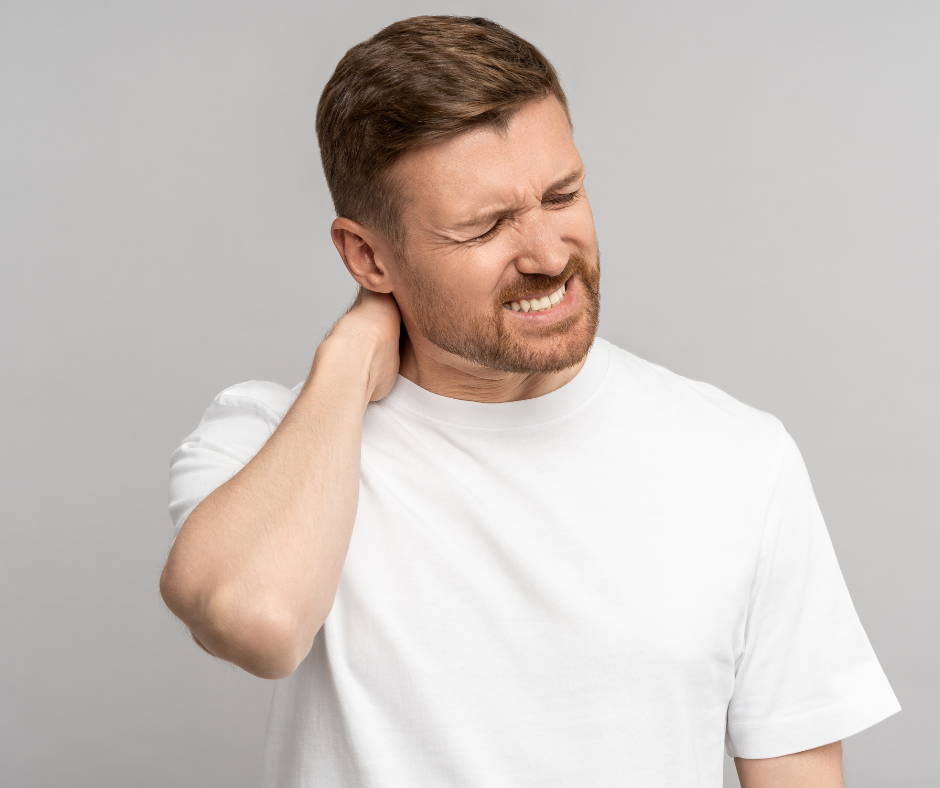
Not all migraines stem from neck problems, but certain patterns can help you identify when your neck is playing a role in your head pain.
Timing Tells the Story
Neck-related migraines often follow a predictable pattern. You might notice neck stiffness or pain hours or even a day before your migraine hits. This neck discomfort serves as an early warning sign that a migraine may be building.
Pay attention to whether your neck pain consistently appears before your headaches. If you can trace most of your migraines back to neck tension or stiffness, there's a good chance your cervical spine is contributing to your migraine pattern.
Movement Makes It Worse
Migraines triggered by neck problems often worsen when you move your head or neck. Turning your head, looking up or down, or even light pressure on your neck muscles might intensify your headache pain.
This is different from typical migraines, which usually feel worse with general movement or light but don't necessarily respond to specific neck positions. If your headache pain changes dramatically based on how you hold or move your neck, cervical involvement is likely.
Location Patterns Matter
Neck-related migraines often start at the base of your skull and radiate forward over your head. You might feel pain or tension in your upper neck that seems to climb up and over your head, sometimes settling behind your eyes or at your temples.
The pain might be on one side initially, corresponding to which side of your neck feels tighter or more restricted. This unilateral pattern that starts in the neck and moves into the head is a classic sign of cervical involvement.
Stress and Posture Connections
If your migraines consistently follow periods of stress, poor sleep, or long hours at a computer, neck tension may be the missing link. Stress and poor posture both contribute to neck muscle tension, which can then trigger migraine attacks in susceptible individuals.
Notice whether your migraines correlate with activities that strain your neck, such as sleeping in an awkward position, working at a poorly set up desk, or carrying heavy bags. These patterns suggest your neck plays a significant role in your migraine development.
5 At-Home Ways to Stop Neck-Triggered Migraines Fast
When neck tension is driving your migraines, targeted interventions that address cervical spine alignment and muscle tension can provide significant relief.
1. Release Neck Tension with Cervical Support
Gentle cervical traction and support can help decompress tight muscles and reduce nerve irritation that contributes to migraine pain.
The Thera Pillow provides targeted support for your cervical spine, helping to restore proper neck alignment and reduce muscle tension. Its contoured design gently stretches tight neck muscles while supporting the natural curve of your cervical spine.
Use the pillow for 15-20 minutes while lying down during migraine onset. The gentle positioning helps reduce pressure on compressed nerves and allows overworked neck muscles to relax. Many people find that early intervention with proper cervical support can prevent a full migraine from developing.
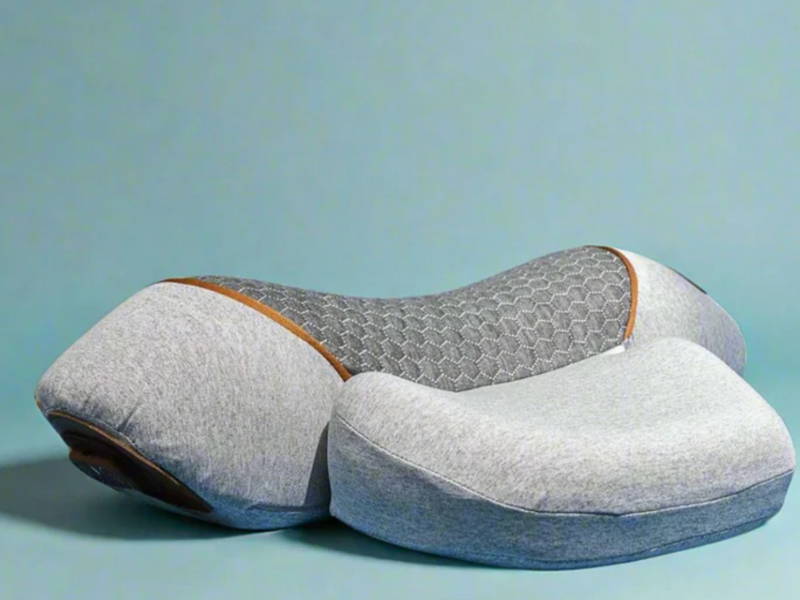
2. Apply Targeted Heat Therapy
Heat therapy increases blood flow to tight muscles and helps break the pain-tension cycle that can escalate into migraine attacks.
Apply a warm towel, heating pad, or heated neck wrap to your upper neck and shoulder area for 15-20 minutes. Focus on the base of your skull and the tops of your shoulders, where tension commonly accumulates.
The increased circulation helps flush out inflammatory substances that can sensitize pain nerves. Heat also helps muscles relax, reducing the mechanical tension that can trigger or worsen migraine pain.
3. Optimize Your Daily Posture Setup
Preventing neck-triggered migraines often comes down to addressing the postural habits that create cervical tension in the first place.
Position your computer screen at eye level so you don't have to crane your neck up or down to see it. Your phone should also be held higher to avoid the "text neck" position that strains your cervical spine.
Set hourly reminders to check your posture throughout the day. When the reminder goes off, gently draw your head back over your shoulders and lift your chest. These small corrections can prevent the accumulation of tension that leads to migraine attacks.
4. Perform Daily Neck Mobility Exercises
Regular neck movement helps prevent the stiffness and tension that can trigger migraines while maintaining a healthy range of motion in your cervical spine.
Gentle Neck Rotations: Slowly turn your head from side to side, holding for a few seconds at each end of the range. This helps maintain mobility in your upper cervical joints.
Chin Tucks: Draw your chin back toward your neck, creating a gentle stretch at the base of your skull. This exercise strengthens the deep neck flexors and counters forward head posture.
Shoulder Blade Squeezes: Pull your shoulder blades together and down, holding for 5 seconds. This helps reset the position of your shoulders and reduces strain on your neck muscles.
Perform these exercises 2-3 times daily, especially during breaks from desk work or after periods of poor posture.
5. Support Proper Alignment During Daily Activities
Maintaining good posture throughout the day reduces the cumulative stress on your neck that can build into migraine triggers.
The Thera Back helps maintain proper spinal alignment during sitting activities, keeping your shoulders back and reducing the forward head posture that strains your neck. This support is particularly valuable during long work sessions or when you're feeling fatigued and more likely to slump.
Good daytime posture support helps prevent the neck tension from accumulating throughout the day. By maintaining better alignment consistently, you reduce the likelihood that cervical stress will reach the threshold needed to trigger a migraine attack.
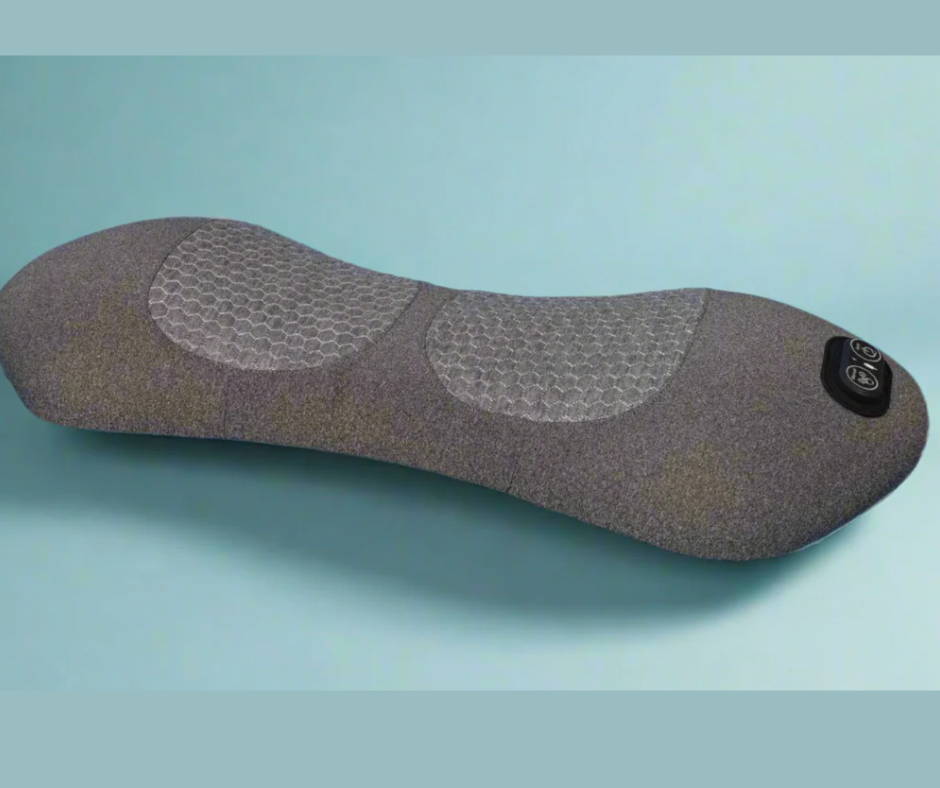
Additional Quick Relief Strategies
Gentle Self-Massage: Use your fingertips to apply gentle pressure to tight spots at the base of your skull and tops of your shoulders. Small circular motions can help release trigger points before they escalate.
Stress Management: Since stress contributes to both neck tension and migraine susceptibility, quick stress-reduction techniques like deep breathing or brief meditation can be surprisingly effective for prevention.
Hydration: Dehydration can worsen both muscle tension and migraine pain. Drinking water consistently throughout the day supports overall muscle function and pain management.
When Neck Pain May Be More Than Just a Migraine Trigger
While neck-related migraines are common and often manageable with conservative care, certain symptoms warrant professional medical evaluation to rule out more serious conditions.
Red Flag Symptoms Require Immediate Attention
Seek immediate medical care if your neck pain and headaches are accompanied by vision changes, weakness in your arms or hands, difficulty speaking, or sudden onset of the worst headache of your life. These symptoms could indicate serious conditions that require urgent treatment.
Neck pain following a recent injury, especially if accompanied by severe headache, should also be evaluated promptly to rule out cervical spine injury or concussion.
Chronic Patterns That Don't Respond to Treatment
If you've been consistently applying good posture habits, neck exercises, and supportive tools for several weeks without improvement in your migraine pattern, it's time to consult a healthcare provider.
Persistent neck stiffness that doesn't improve with gentle movement and self-care may indicate underlying joint problems or muscle dysfunction that requires professional treatment. Physical therapy, chiropractic care, or medical evaluation might be necessary to address the root cause.
Progressive Worsening of Symptoms
If your neck pain and migraines are becoming more frequent, more severe, or affecting your ability to work or enjoy daily activities, professional help can provide additional treatment options and rule out underlying conditions.
Some people benefit from prescription medications, specialized physical therapy techniques, or other interventions that aren't available for home treatment. Don't hesitate to seek professional care if your symptoms are significantly impacting your quality of life.
Break the Cycle Starting Today
The connection between neck pain and migraines doesn't have to control your life. When you address the cervical tension that triggers your headaches, you're taking control of a major piece of the migraine puzzle.
Simple changes in posture, targeted support, and consistent neck care can interrupt the pain cycle before it escalates into a full migraine attack. The key is recognizing the early warning signs and having effective tools ready to respond.
Ready to tackle neck-triggered migraines at their source? Explore Callixe's wellness products for more advanced therapeutic support.
FAQs About Neck Pain and Migraines
Understanding the relationship between neck pain and migraines can help you make better decisions about treatment and know when to seek additional help.
Can tension in my neck actually cause a migraine?
Yes, neck tension can engage nerves and muscles that trigger or worsen a migraine attack. The upper cervical nerves connect directly to the trigeminal nerve system, which plays a major role in migraine pain. When neck muscles become tight or inflamed, they can sensitize these pain pathways and make migraine attacks more likely.
How common is neck pain in migraine sufferers?
Research shows that neck pain is approximately 12 times more likely in migraine patients than in those without migraines. This strong association suggests that addressing neck problems can be an important part of migraine management for many people.
Will fixing my posture stop my migraines?
Improving posture can significantly reduce migraine frequency and severity if neck tension is a primary trigger for your attacks. While posture correction alone might not eliminate all migraines, many people see substantial improvement when they address the cervical spine issues that contribute to their headache patterns.
Should I see a doctor for neck-related migraines?
Yes, especially if migraines persist despite consistent at-home care, or if you experience unusual symptoms like vision changes, weakness, or numbness. A healthcare provider can help determine if there are underlying conditions contributing to your symptoms and recommend additional treatment options if needed.
How long does it take to see improvement from neck-focused migraine treatment?
Many people notice some improvement in migraine frequency or intensity within 2-4 weeks of consistently addressing neck tension and posture. However, it can take several months to see maximum benefits as your muscles adapt to better positioning and movement patterns. Consistency with exercises, posture correction, and supportive tools is key to long-term improvement.


